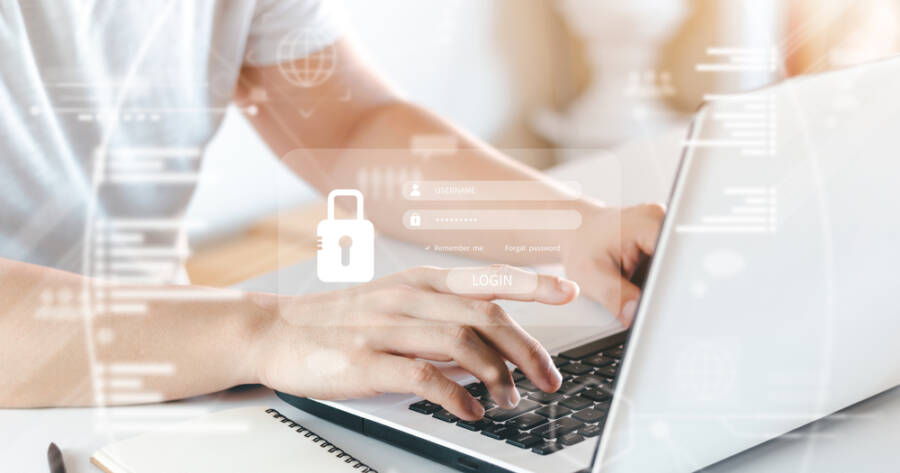From banking and shopping to messaging and work, our digital lives carry sensitive information that needs to stay protected. Cyber threats can come from anywhere, but a few simple tools can create strong defenses. Password managers, two-factor authentication (2FA) apps, and device encryption each add a critical layer of protection, helping individuals and small teams maintain control over their data and minimize the risk of breaches.
Why Strong Password Practices Are Essential
Passwords are the first line of defense in securing your digital life, yet many people continue to reuse weak passwords across multiple accounts. This makes them vulnerable to credential-stuffing attacks, where hackers use stolen credentials from one site to try and access others.
To stay secure, it’s crucial to use complex, unique passwords for every account. However, remembering dozens of long, random passwords is nearly impossible without help. That’s where password managers come in.
A password manager stores all your login credentials in an encrypted vault, which is accessible through a single master password. These tools can also generate strong, random passwords and auto-fill them into websites and apps. By removing the burden of memorization, password managers make it easier to maintain good security habits consistently.
Some also include features like password audits, dark web monitoring, and secure notes, giving you a more complete view of your digital safety.
Strengthen Accounts with Two-Factor Authentication
Even the strongest password isn’t enough on its own. If someone steals your login credentials, they could still access your accounts unless there’s an extra layer of verification. That’s where two-factor authentication (2FA) plays a vital role.
2FA adds a second step to the login process, usually requiring something you have—like a phone or hardware token—in addition to something you know (your password). One common method is using an authentication app that generates time-sensitive codes. These apps are more secure than SMS codes, which can be intercepted through SIM-swapping or phishing attacks.
Popular 2FA apps include options like Authy, Google Authenticator, or Microsoft Authenticator. They’re easy to install and support a wide range of websites and services. Once set up, each time you log in, you’ll be prompted to enter a code from your app—making unauthorized access far less likely.
Some services also support hardware security keys, which plug into your device and provide an even higher level of protection. While these tools are optional for most users, they are particularly useful for people managing sensitive data or working in high-risk industries.
Encrypt Your Devices for Total Protection
While passwords and 2FA protect online accounts, they can’t safeguard data stored locally on your devices. If your phone, laptop, or external hard drive is lost or stolen, your information could be exposed—unless your device is encrypted.
Encryption scrambles your data into unreadable code that can only be unlocked with a password or key. Most modern operating systems offer built-in encryption tools: FileVault on macOS, BitLocker on Windows, and full-disk encryption on Android and iOS devices. Once enabled, encryption protects your files even if someone removes the hard drive and tries to access it directly.
For mobile users, setting a strong passcode and enabling encryption is essential. This ensures that even if someone physically gains access to your device, they won’t be able to read your messages, access cloud services, or retrieve stored files.
Encryption also helps protect against malware and ransomware attacks. In some cases, if your data is encrypted, it’s much harder for malicious software to read or copy it without your permission.
Layering These Tools for Maximum Security
Each of these tools—password managers, 2FA apps, and encryption—serves a different purpose, but together they create a strong security foundation. Think of it like locking your front door, installing an alarm, and keeping valuables in a safe. No single measure is perfect, but combined, they dramatically reduce your risk.
Start by identifying your most sensitive accounts—like banking, email, and health records—and prioritize securing those first. Use your password manager to create strong credentials, set up 2FA wherever it’s available, and enable encryption on all devices you use regularly.
It’s also wise to update your software regularly, avoid clicking unknown links, and back up important data in secure locations. Cybersecurity isn’t just about tools—it’s also about habits.
Take Control of Your Online Safety
Securing your digital life doesn’t require technical expertise or expensive tools. By adopting a few smart practices—using a password manager, enabling 2FA, and turning on device encryption—you can protect your information and reduce your exposure to cyber threats.
These steps may seem small, but they send a powerful message: that your data and your privacy matter. As our lives continue to move online, staying secure is no longer optional—it’s essential. Start today, and give yourself peace of mind for the future.

